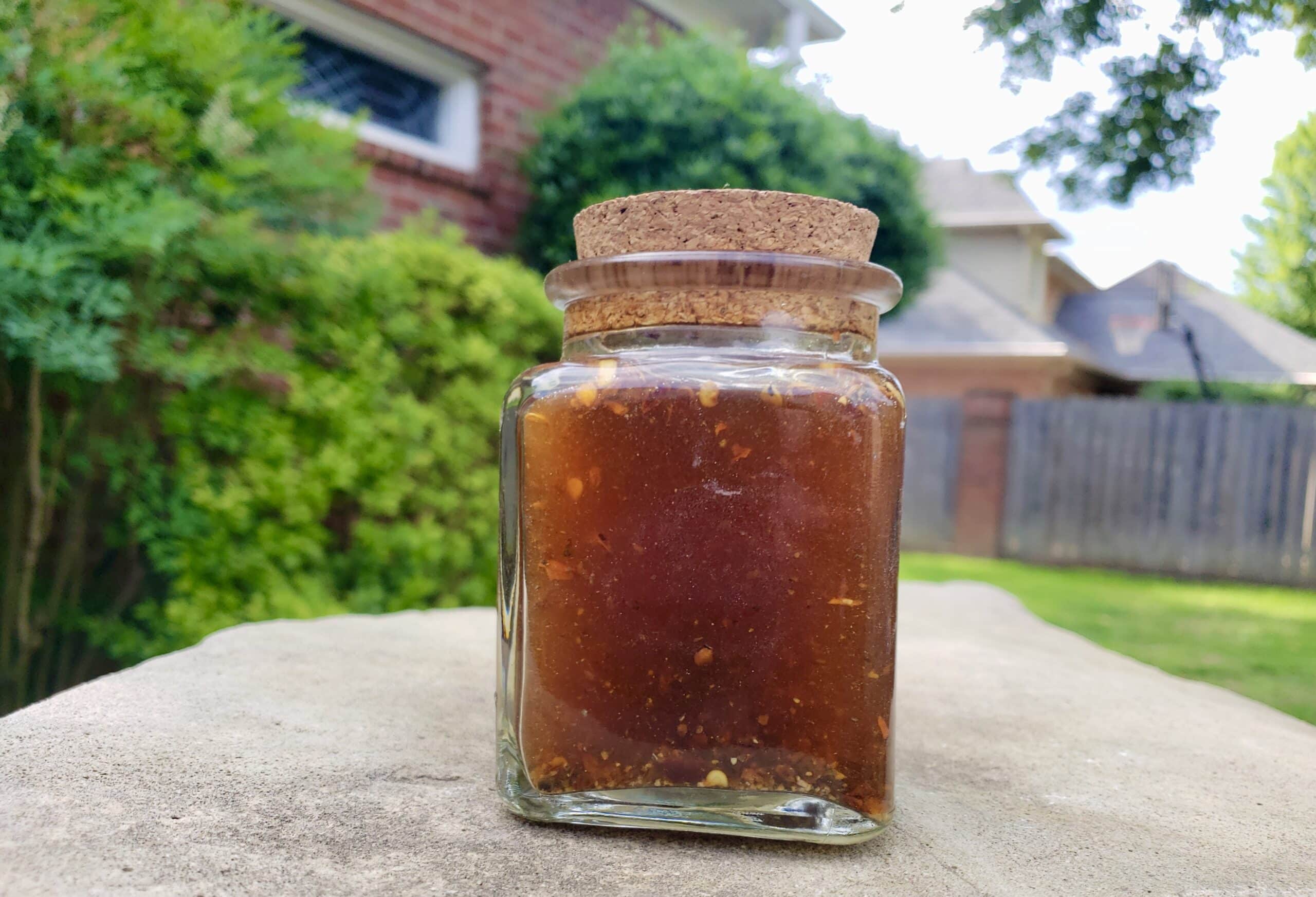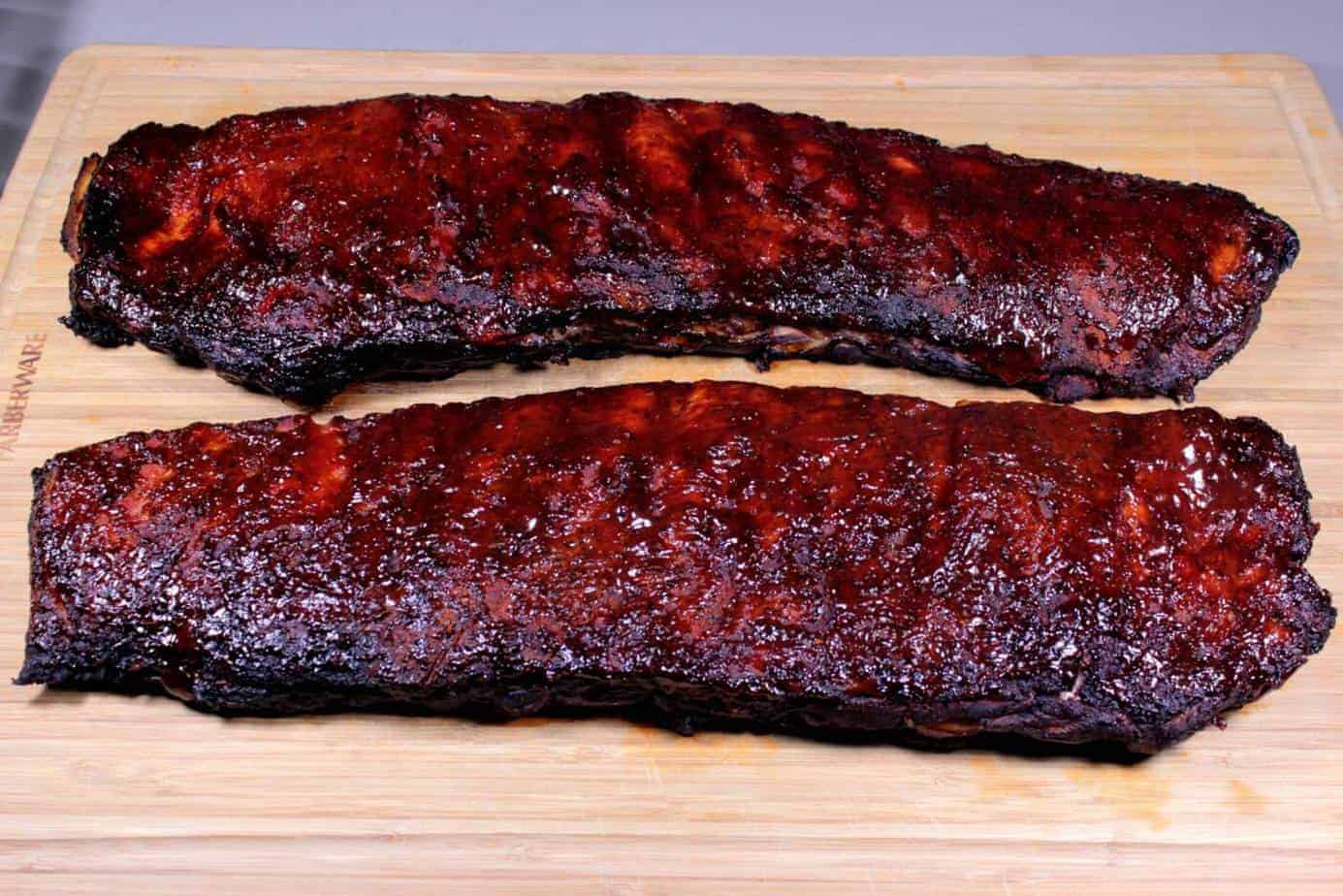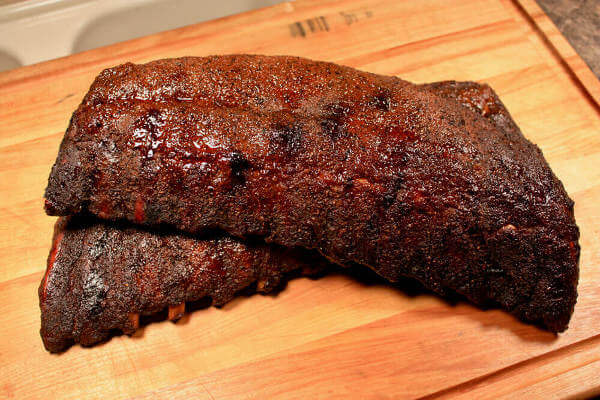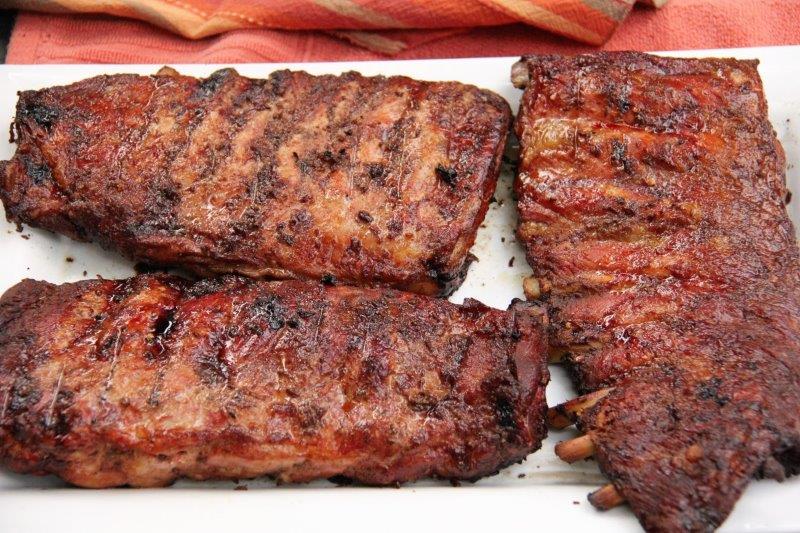Pork ribs
barbecue ribs, barbeque ribs, BBQ ribs
Pork ribs are a cut of pork popular in Western and Asian cuisines. The ribcage of a domestic pig, meat and bones together, is cut into usable pieces, prepared by smoking, grilling, or baking – usually with a sauce, often barbecue – and then served. Several different types of ribs are available, depending on the section of the rib cage from which they are cut. Variations in the thickness of the meat and bone, as well as levels of fat in each cut, can alter the flavor and texture of the prepared dish. The inner surface of the rib cage is covered by a layer of connective tissue that is difficult to cook tender; it is usually removed before marinating or cooking. Back ribs (also back ribs or loin ribs) are taken from the top of the rib cage between the spine and the spare ribs, below the loin muscle. They have meat between the bones and on top of the bones and are shorter, curved, and sometimes meatier than spare ribs. The rack is shorter at one end due to the natural tapering of a pig's rib cage. The shortest bones are typically only about 8 centimetres (3 inches) and the longest is usually about 15 cm (6 in), depending on the size of the hog. A pig side has 15 - 16 ribs (depending on the breed), but usually, two or three are left on the shoulder when it is separated from the loin. A rack of back ribs contains a minimum of eight ribs (some may be trimmed if damaged) but can include up to 13 ribs, depending on how the butcher has prepared it. A typical commercial rack has 10–13 bones. If fewer than ten bones are present, butchers call them "cheater racks."
Source: Wikipedia
Recipes

:max_bytes(150000):strip_icc()/3789556-baked-bbq-baby-back-ribs-photo-by-chef-john-edcb13e49ef84233ad092033464b82ac.jpg)
:max_bytes(150000):strip_icc()/Texas-Style-Baked-Beans63-1-2000-def3c9599e5749a0a6288e84198ec905.jpg)





